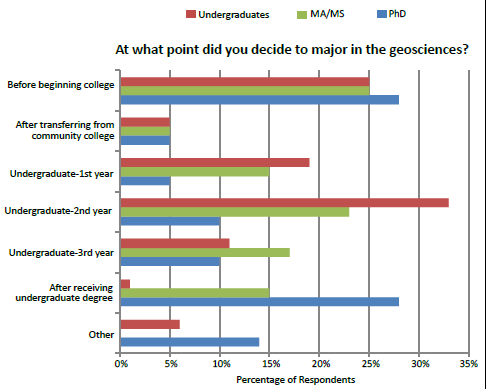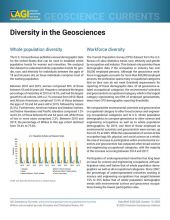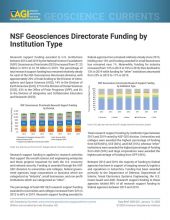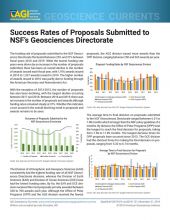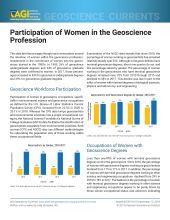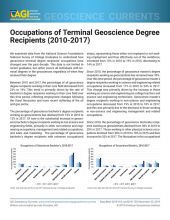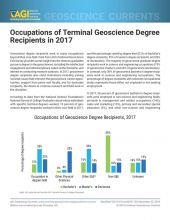AGI’s National Geoscience Student Exit Survey was developed to ascertain from geoscience degree recipients the relevant experiences in school and their immediate career plans upon graduation. In April 2012, AGI distributed the second pilot of this survey to geoscience departments willing to participate and received 294 full responses from 45 different departments. This Currents examines the results from two of the questions which inquire about the decision points for successful graduates pursuing a degree in the geosciences.
What was the most important reason for deciding to major in the geosciences?
Over 30% of undergraduate degree recipients decided on their major due to either an introductory geoscience course or because of an interest in the subject matter before entering school. Similarly, the majority of graduate students indicated these same two decision points for entering the geosciences. In contrast, 24% of students graduating with a Ph.D. explictly indicated an intent to pursue a career in the geosciences.
What was the most important reason for deciding to major in the geosciences? Source: AGI's National Geoscience Exit Survey.
At what point did you decide to major in the geosciences?
Most students take introductory science classes during the first two years of their academic careers. Consistent with the above results, this graph shows that the majority of undergraduate degree recipients decided to major in the geosciences by their sophomore year. Most Master’s degree recipients decided to major either before college or during their second year as an undergraduate student, which is consistent with previous ndings. However, nearly 15% decided on a geoscience Master’s degree after completing an undergraduate degree. Interestingly, over 50% of Ph.D. students decided to major in the geosciences either before college enrollment or after receiving their undergraduate degree.
At what point did you decide to major in the geosciences? Source: AGI's National Geoscience Exit Survey.
View an in-depth discussion of this information in the corresponding Geoscience Currents Discussion Webinar.



